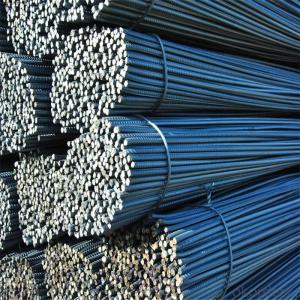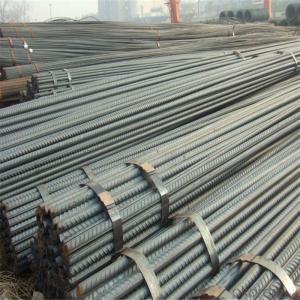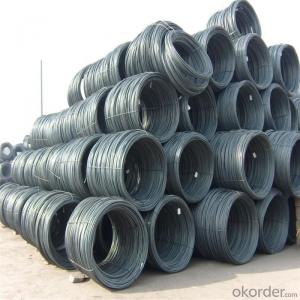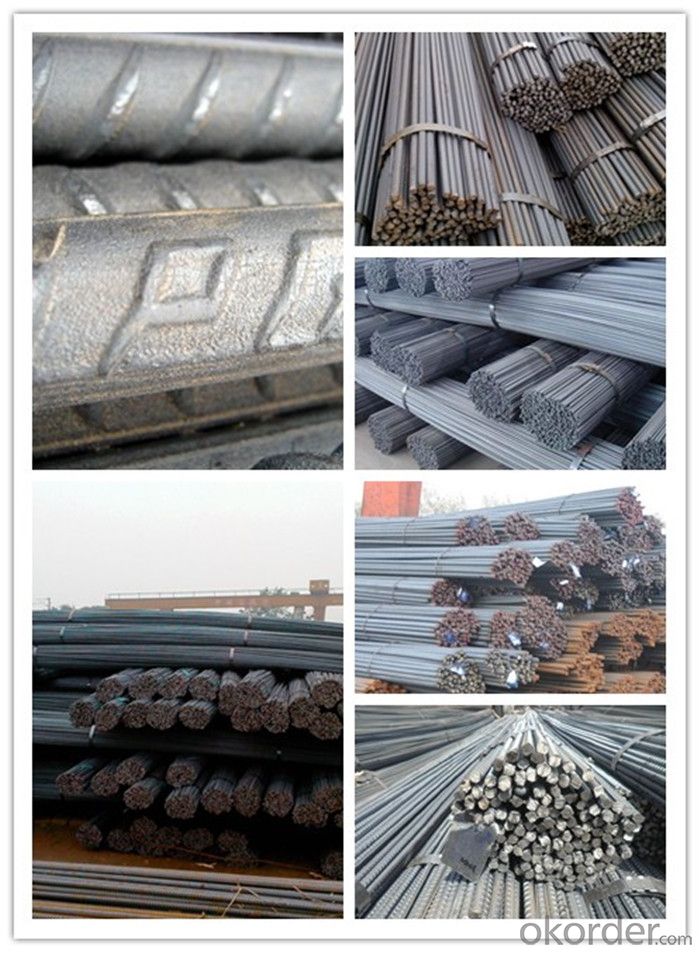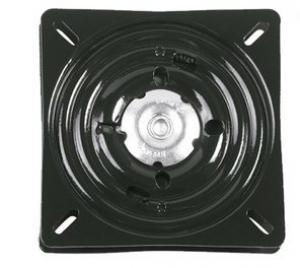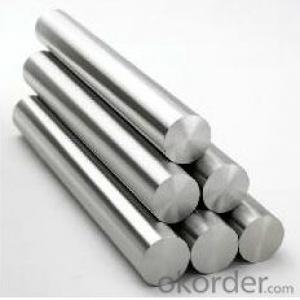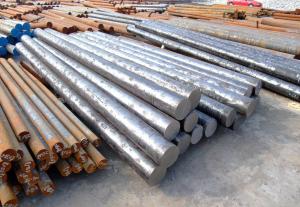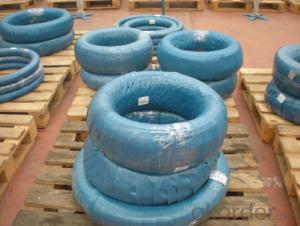Hrb400 Steel Rebar Prices
- Loading Port:
- Tianjin
- Payment Terms:
- TT OR LC
- Min Order Qty:
- 100 m.t.
- Supply Capability:
- 500000 m.t./month
OKorder Service Pledge
OKorder Financial Service
You Might Also Like
Item specifice
Hrb400 Steel Rebar
Description of Hrb400 Steel Rebar
1, Diameter: 5.5mm-10mm Hrb400 Steel Rebar
10m- 40mm Hrb400 Steel Rebar
2, Length: 6m, 9m, 12m or customized
3, Standard: GB, ASTM, AISI, SAE, DIN, JIS, EN
OEM technology - send detailed technical parameters for accurate quotation.
2, Produce Process: smelt iron - EAF smelt billet - ESR smelt billet -
hot rolled or forged to get the steel round bar and plate
3, Heat Treatment: annealing, normalizing, tempering, quenching
4, Surface Treatment: Black
5, Quality Assurance: We accept third party inspection for all orders.
You can ask testing organizations such as SGS, BV, etc. to test our products before shipping.
Chemical Composition of Hrb400 Steel Rebar
Grade | Technical data of the original chemical composition(%) | |||||
Reinforcing steel bar HRB335 | C | Mn | Si | S | P | B |
≤0.25 | ≤1.60 | ≤0.80 | ≤0.045 | ≤0.045 | >0.0008 | |
Physics Capability | ||||||
Yield Strength(N/cm2) | Tensile Strength(N/cm2) | Elongation(%) | ||||
≥ 335 | ≥490 | ≥16 | ||||
Reinforcing steel bar HRB400 | C | Mn | Si | S | P | B |
≤0.25 | ≤0.16 | ≤0.80 | ≤0.045 | ≤0.045 | 0.04-0.12 | |
Physics Capability | ||||||
Yield Strength(N/cm2) | Tensile Strength(N/cm2) | Elongation(%) | ||||
≥ 400 | ≥ 570 | ≥ 14 | ||||
Products Show of Hrb400 Steel Rebar
Company Information
CNBM International Corporation is the most important trading platform of CNBM group.
Whith its advantages, CNBM International are mainly concentrate on Cement, Glass, Iron and Steel, Ceramics industries and devotes herself for supplying high qulity series of refractories as well as technical consultancies and logistics solutions.


F A Q
1, Your advantages?
professional products inquiry, products knowledge train (for agents), smooth goods delivery, excellent customer solution proposale
2, Test & Certificate?
SGS test is available, customer inspection before shipping is welcome, third party inspection is no problem
3, Factory or Trading Company?
CNBM is a trading company but we have so many protocol factories and CNBM works as a trading department of these factories. Also CNBM is the holding company of many factories.
4, Payment Terms?
30% TT as deposit and 70% before delivery.
Irrevocable L/C at sight.
5, Trading Terms?
EXW, FOB, CIF, FFR, CNF
6, After-sale Service?
CNBM provides the services and support you need for every step of our cooperation. We're the business partner you can trust.
For any problem, please kindly contact us at any your convenient time.
We'll reply you in our first priority within 24 hours.
- Q:Can special steel be used in food processing applications?
- Yes, special steel can be used in food processing applications. Special steel, such as stainless steel, is commonly used in the food industry due to its excellent corrosion resistance, hygienic properties, and durability. It is safe for food contact, easy to clean, and does not react with acidic or alkaline substances.
- Q:How does special steel perform in cryogenic strength?
- Special steel is known for its excellent performance in cryogenic strength. Cryogenic strength refers to the ability of a material to withstand extremely low temperatures without losing its mechanical properties. Special steels, such as stainless steels and nickel-based alloys, are specifically engineered to exhibit exceptional strength, toughness, and resistance to cracking at cryogenic temperatures. The unique composition and microstructure of special steel allow it to maintain its structural integrity and mechanical properties even in extreme cold conditions. These materials are designed to withstand the thermal stresses and brittleness that can occur at cryogenic temperatures, ensuring their reliability and performance in various applications. Special steel's ability to perform well in cryogenic strength is crucial in industries such as aerospace, energy, and gas processing, where components are exposed to extremely low temperatures. For example, in the aerospace industry, special steel is used in the construction of cryogenic fuel tanks and rocket engines, where it must withstand the extreme cold of space. Furthermore, special steel's cryogenic strength is also beneficial in applications like liquefied natural gas (LNG) storage and transportation. The low temperatures involved in LNG processes require materials that can handle the thermal stresses and maintain their strength and toughness. In summary, special steel exhibits exceptional performance in cryogenic strength due to its unique composition and microstructure. Its ability to withstand extremely low temperatures without losing mechanical properties makes it a reliable choice for applications in industries where cryogenic conditions are present.
- Q:What are the different methods of surface pickling for special steel?
- There are several methods of surface pickling for special steel, including acid pickling, electrolytic pickling, and mechanical pickling. Acid pickling involves immersing the steel in an acid solution to remove impurities and oxides from the surface. Electrolytic pickling uses an electric current to remove contaminants from the surface of the steel. Mechanical pickling involves using abrasive materials or mechanical force to physically remove impurities and oxides from the surface. Each method has its advantages and may be chosen based on the specific requirements of the steel and the desired outcome.
- Q:What are the different forms of special steel available in the market?
- There are several different forms of special steel available in the market, including stainless steel, alloy steel, tool steel, high-speed steel, and carbon steel. Each of these forms has its own unique properties and uses, making them suitable for various applications in industries such as construction, automotive, manufacturing, and aerospace.
- Q:How does special steel contribute to the defense aerospace industry?
- Special steel plays a critical role in the defense aerospace industry by providing the necessary strength, durability, and resistance to extreme conditions that are essential for the design and production of military aircraft and defense systems. One of the key contributions of special steel is its ability to withstand high temperatures and pressures, making it suitable for the construction of engine components such as turbine blades, exhaust systems, and combustion chambers. These parts are subjected to intense heat and stress during operation, and special steel ensures they can withstand these extreme conditions without compromising performance or safety. Furthermore, special steel is utilized in the manufacturing of structural components in military aircraft, such as landing gear, wings, and fuselage sections. These components need to possess exceptional strength and toughness to withstand the harsh conditions encountered during flight and combat operations. Special steel provides the necessary mechanical properties to ensure these components can withstand the forces and impacts they may experience. Another crucial aspect where special steel contributes to the defense aerospace industry is its corrosion resistance. Military aircraft are often exposed to harsh environments, including saltwater and corrosive chemicals. Special steel, through the addition of corrosion-resistant alloys, helps protect critical parts from corrosion, ensuring the longevity and reliability of the aircraft. Moreover, special steel's high strength-to-weight ratio allows for the production of lightweight yet robust components in defense aerospace applications. This characteristic is highly desirable in the aerospace industry as it enables the design of aircraft that are more fuel-efficient, faster, and capable of carrying higher payloads. By reducing weight, special steel contributes to the overall performance and efficiency of military aircraft. In conclusion, special steel is an indispensable material in the defense aerospace industry. Its unique properties, such as high temperature resistance, strength, corrosion resistance, and lightweight characteristics, enable the production of reliable, high-performance military aircraft and defense systems. Special steel plays a crucial role in ensuring the safety, efficiency, and effectiveness of the defense aerospace industry.
- Q:What are the specific requirements for special steel used in the agricultural sector?
- Special steel used in the agricultural sector has specific requirements to ensure optimal performance and durability in the demanding conditions it will be subjected to. Some of the key requirements for special steel in the agricultural sector include: 1. Corrosion resistance: Agricultural equipment often comes into contact with corrosive substances such as fertilizers, pesticides, and animal waste. Special steel used in this sector must have high resistance to corrosion to prevent premature deterioration and ensure long service life. 2. High strength: Agricultural equipment is subjected to heavy loads, impacts, and vibrations during operation. Special steel used in this sector must possess high tensile strength and toughness to withstand these forces without deformation or failure. 3. Wear resistance: Agricultural machinery operates in abrasive environments, where soil, rocks, and other debris can cause significant wear on metal surfaces. Special steel used in the agricultural sector should have excellent wear resistance to maintain sharp cutting edges and prevent premature wear. 4. Machinability: Agricultural equipment often requires complex components with intricate shapes and profiles. Special steel used in this sector should have good machinability to enable easy fabrication, welding, and shaping of the steel into the desired form. 5. Heat resistance: Some agricultural processes involve high temperatures, such as heat treatment or exposure to hot gases. Special steel used in these applications should have good heat resistance to maintain its mechanical properties and structural integrity even at elevated temperatures. 6. Cost-effectiveness: Agricultural equipment manufacturers often need to balance performance with cost. Special steel used in the agricultural sector should provide a cost-effective solution, offering the desired properties at a competitive price. By meeting these specific requirements, special steel used in the agricultural sector can provide reliable and efficient performance, contributing to the productivity and longevity of agricultural machinery and equipment.
- Q:How is boron steel used in automotive safety applications?
- Boron steel is used in automotive safety applications due to its exceptional strength and ability to absorb impact energy. It is commonly utilized in the construction of car bodies and safety components such as side impact beams, roll cage reinforcements, and door intrusion beams. By incorporating boron steel, vehicles can better withstand and distribute crash forces, providing enhanced protection to occupants during collisions.
- Q:What are the different methods for improving the creep resistance of special steel?
- Several methods exist to enhance the creep resistance of special steel. One commonly employed technique involves alloying. By incorporating specific alloying elements like chromium, molybdenum, and vanadium, the steel's creep resistance can be significantly improved. These alloying elements create stable carbides or nitrides that serve as obstacles to dislocation movement, thereby reducing the rate of creep deformation. Heat treatment represents another effective approach. By subjecting the steel to carefully controlled heating and cooling processes, the microstructure can be refined to enhance its creep resistance. Techniques such as quenching and tempering aid in the formation of a fine-grained structure, which in turn increases the steel's strength and resistance to creep. Surface modification offers an alternative means of improving creep resistance. Nitriding and carburizing techniques can be utilized to introduce nitrogen or carbon into the steel's surface layer, creating a hardened layer that enhances creep resistance. Moreover, grain size control can be achieved through methods like grain boundary engineering or severe plastic deformation. By refining the grain structure, the movement of dislocations within the material is impeded, resulting in improved creep resistance. Lastly, the application of coatings can also bolster the creep resistance of special steel. Coatings such as ceramic or metallic coatings provide a protective layer that hampers the diffusion of impurities and slows down the creep rate. To summarize, the improvement of creep resistance in special steel can be accomplished through various techniques, including alloying, heat treatment, surface modification, grain size control, and the use of coatings. These methods aim to fortify the steel's microstructure, hinder dislocation movement, and establish protective barriers against creep deformation.
- Q:What are the challenges in welding special steel alloys?
- Welding special steel alloys presents various obstacles due to their distinct properties and composition. Key challenges encountered when welding special steel alloys include the following: 1. Elevated melting point: Special steel alloys typically possess higher melting points compared to regular steel, necessitating increased heat input during the welding process. This can create difficulties in achieving proper fusion and may require specialized welding equipment and techniques. 2. Disparity in thermal expansion: Special steel alloys may exhibit different coefficients of thermal expansion in comparison to the base metal or other materials being joined. This can result in the development of stress and distortion during welding, impacting the structural integrity of the welded joints. 3. Heat sensitivity: Certain special steel alloys are more susceptible to heat-affected zone (HAZ) cracking and other forms of weld defects. The heightened heat input during welding can induce the formation of brittle phases or precipitates, leading to reduced mechanical properties and potential weld failures. 4. Metallurgical alterations: Welding special steel alloys can bring about significant metallurgical changes in the base metal and the heat-affected zone. These changes encompass the formation of new microstructures, variations in hardness, and modifications in chemical composition. Such alterations can affect the overall performance and properties of the welded joints. 5. Pre-weld and post-weld treatments: Specific pre-weld and post-weld treatments are often required for special steel alloys to minimize the risk of weld defects and optimize the properties of the welded joints. These treatments may encompass preheating, post-weld heat treatment, or the utilization of specialized filler metals to ensure adequate weld integrity. 6. Limited consumable availability: Special steel alloys may have a limited selection of suitable consumables, such as filler metals and shielding gases, which are vital for achieving high-quality welds. The absence of appropriate consumables can make it challenging to find compatible materials that offer sufficient strength and corrosion resistance in the welded joints. To overcome these challenges effectively, it is essential to possess a comprehensive understanding of the specific properties and requirements of the special steel alloy being welded. The utilization of proper welding techniques, including heat control, filler material selection, and post-weld treatments, is crucial to ensure welds of superior quality with optimal mechanical properties and structural integrity. Moreover, collaborating with material suppliers, welding experts, and adhering to industry standards and guidelines can facilitate the effective resolution of challenges associated with welding special steel alloys.
- Q:How is special steel used in the production of cutting inserts?
- Special steel is used in the production of cutting inserts due to its unique properties that make it ideal for this application. Cutting inserts are used in machining operations to remove material from a workpiece and shape it into the desired form. These inserts need to be able to withstand high temperatures, resist wear and abrasion, and maintain their sharp cutting edges for prolonged periods. Special steel, also known as tool steel, is specifically designed to meet these requirements. It is an alloy that contains various elements such as chromium, tungsten, vanadium, and molybdenum, which enhance its mechanical properties. Special steel has excellent hardness, toughness, and high-temperature resistance, making it suitable for cutting inserts. The special steel used in the production of cutting inserts undergoes a series of processes, including heat treatment, to further enhance its properties. Heat treatment involves heating the steel to a specific temperature and then rapidly cooling it, which adds strength and hardness to the material. This process helps to ensure that the cutting inserts can withstand the extreme forces and temperatures encountered during machining operations. Additionally, special steel can be coated with various materials, such as titanium nitride or diamond-like carbon, to further improve its performance. These coatings enhance the hardness, reduce friction, and improve the overall wear resistance of the cutting inserts, increasing their lifespan and efficiency. In summary, special steel is used in the production of cutting inserts due to its exceptional hardness, toughness, high-temperature resistance, and wear resistance. These properties allow the cutting inserts to withstand the demanding conditions of machining operations and maintain their sharp cutting edges for prolonged periods, resulting in efficient and precise material removal.
1. Manufacturer Overview |
|
|---|---|
| Location | |
| Year Established | |
| Annual Output Value | |
| Main Markets | |
| Company Certifications | |
2. Manufacturer Certificates |
|
|---|---|
| a) Certification Name | |
| Range | |
| Reference | |
| Validity Period | |
3. Manufacturer Capability |
|
|---|---|
| a)Trade Capacity | |
| Nearest Port | |
| Export Percentage | |
| No.of Employees in Trade Department | |
| Language Spoken: | |
| b)Factory Information | |
| Factory Size: | |
| No. of Production Lines | |
| Contract Manufacturing | |
| Product Price Range | |
Send your message to us
Hrb400 Steel Rebar Prices
- Loading Port:
- Tianjin
- Payment Terms:
- TT OR LC
- Min Order Qty:
- 100 m.t.
- Supply Capability:
- 500000 m.t./month
OKorder Service Pledge
OKorder Financial Service
Similar products
New products
Hot products
Hot Searches
Related keywords

